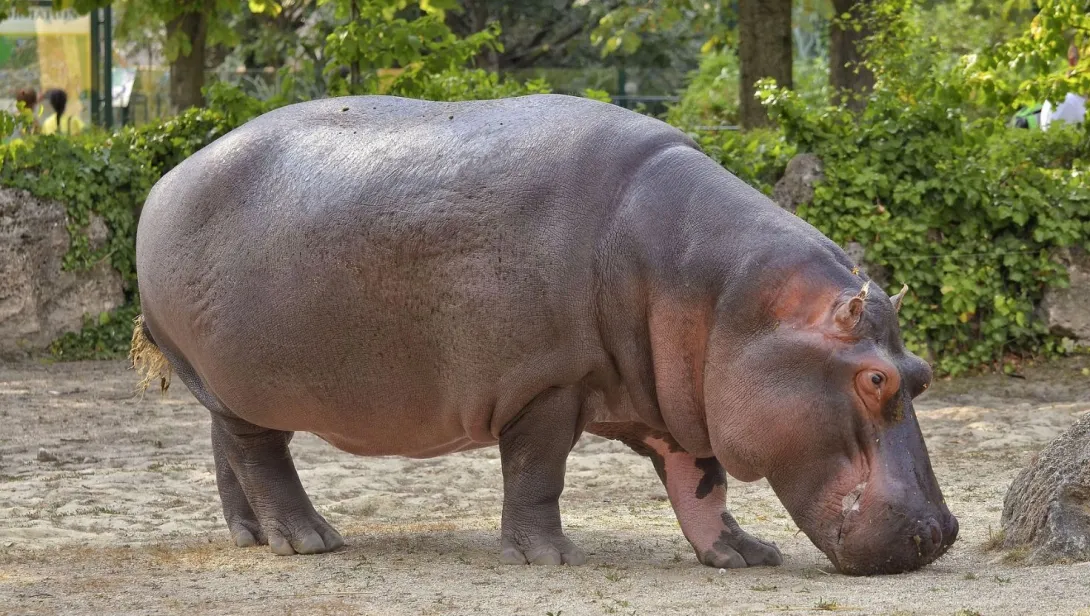Skip to main content
General Information
- The Hippopotamus (Hippopotamus amphibius) is a large, semi-aquatic mammal native to Africa.
- It is the third-largest land mammal after the elephant and rhinoceros.
- Hippos are known for their aggressive nature and are considered one of the most dangerous animals in Africa.
- They are herbivores, feeding mainly on grass.
- Hippos are primarily found in rivers, lakes, and swamps of sub-Saharan Africa.
Physical Characteristics
- Adult hippos can weigh between 1,300 to 2,000 kg (2,900 to 4,400 lbs), with males being larger than females.
- They can reach a length of 3.5 to 5 meters (11 to 16 feet) and a height of 1.5 meters (5 feet) at the shoulder.
- Despite their massive size, hippos can run up to 30 km/h (19 mph) on land.
- They have short, stocky legs and a large barrel-shaped body.
- Hippos have thick, almost hairless skin that secretes a pinkish-red fluid acting as a natural sunscreen and antibiotic.
Habitat and Adaptation
- Hippos spend most of their time in water to keep cool and protect their skin from the sun.
- They are excellent swimmers and can hold their breath for up to 5 minutes underwater.
- Their eyes, ears, and nostrils are positioned on top of their heads, allowing them to stay mostly submerged while still breathing and seeing.
- They can close their nostrils and ears to prevent water from entering while submerged.
Diet and Feeding Behavior
- Hippos are strict herbivores, mainly grazing on grass at night.
- They consume up to 40 kg (88 lbs) of vegetation per night.
- Despite living in water, they do not eat aquatic plants.
- Hippos have powerful jaws that can open up to 150 degrees, displaying large tusks.
Social Behavior
- Hippos live in groups called pods or herds, consisting of 10 to 30 individuals.
- A dominant male controls the group and defends his territory.
- They use grunts, bellows, and body language to communicate.
- Hippos are highly territorial in water but less aggressive on land.
Reproduction and Lifespan
- Hippos mate and give birth in water.
- The gestation period lasts about 8 months.
- Females give birth to a single calf, which weighs around 40 kg (88 lbs) at birth.
- Calves stay close to their mothers for protection and nurse underwater.
- Hippos can live up to 40-50 years in the wild and longer in captivity.
Threats and Conservation
- The main threats to hippos are habitat loss, poaching, and human-wildlife conflict.
- They are hunted for their ivory-like teeth and meat.
- Climate change and droughts are reducing their water sources.
- Their conservation status is classified as Vulnerable by the IUCN.
Interesting Facts
- Hippos are closely related to whales and dolphins rather than other land mammals.
- They can sleep underwater and automatically resurface to breathe without waking up.
- Despite their bulky appearance, hippos are fast runners on land.
- They have been known to attack boats and crocodiles if they feel threatened.
- Their powerful bite force can reach up to 1,800 PSI, one of the strongest among land animals.
